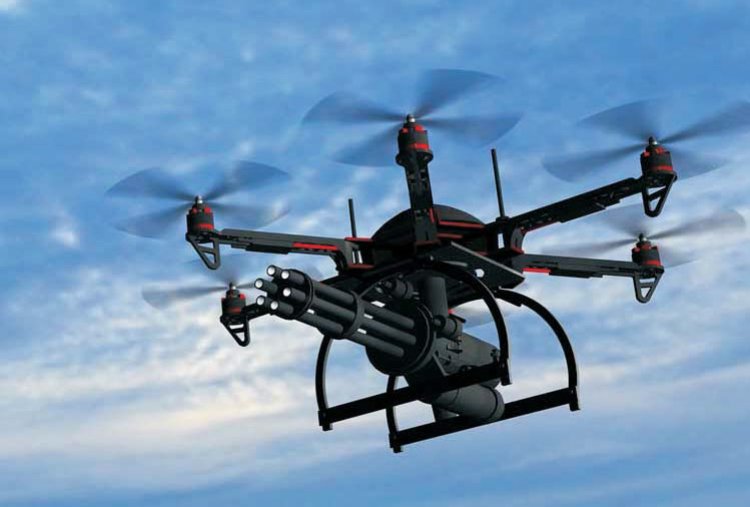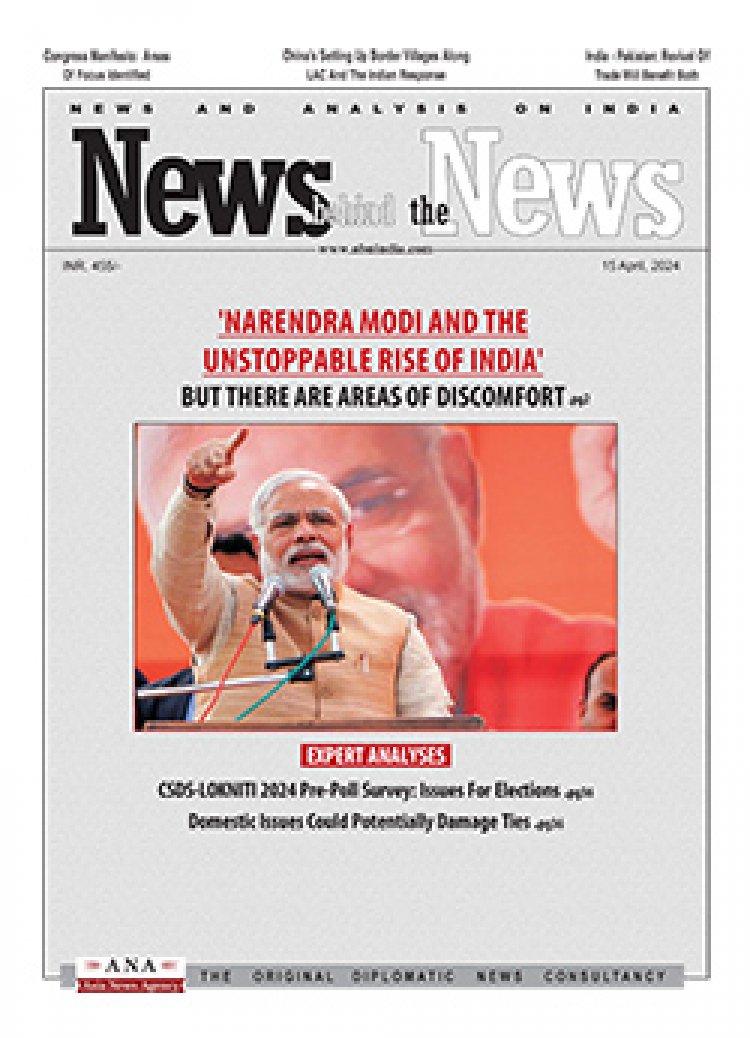Killer Drones: New age Warfare in India
Amulya Ganguli

The Line of Control (LoC) on the India-Pakistan border has become after a ceasefire agreement, but that doesn’t mean that there is an improvement in mutual relations between the two near-permanent enemies. The suspicion and hostility remain on the Indian side because of the continuing acts of terrorism in the Kashmir valley, though not on the scale that was witnessed before August 5, 2019, when the state of Jammu and Kashmir was reduced to a Union territory and its special status scrapped.
However, the recent attacks by two drones on an air force facility in Jammu have not only ratcheted up the tension in the region, but have also given a new dimension to the hostile atmosphere. It is not yet clear from where the two drones came, whether from across the border 14 km away or from within Indian territory. If it is the latter, then it will seem that the local terrorists have found a new weapon although it may have been supplied by Pakistan.
Since the incident, other drones have been seen in the air and the Indian military establishment has started considering acquiring anti-drone equipment from Israel. Given their lightweight and manoeuvrable nature, the 30-cm-to-one-metre-wide drones can be potent weapons in the hands of the adversaries although their capacity to inflict damage is not much unless oil installations are hit as was done in Saudi Arabia by the Yemeni rebels.
However, the belief that these “easily available” weapons, as the chief of the defence staff, General Bipin Rawat has said, may be hovering overhead undetected by radar and ready to swoop down any minute can be unnerving for both civilians and armed personnel. Their only hope is that ways to counter the drones with lasers or by disrupting their satellite or video links will be discovered soon considering that the army chief, General M.M. Naravane, has said, that both state and non-state actors are expected to use these new weapons from now on.
It is also known that drones are used for civilian purposes, such as by the police for traffic surveillance or by farmers to spray pesticides. It has also been suggested that they become a part of e-commerce in order to meet household demands for food or grocerties or other items of daily consumption. War is not their only objective. Yet, from the earlier world of tanks, machine guns and fighter planes, the 21st century is entering the field of artificial intelligence and algorithm in warfare with a new infantry comprising cyber warriors.
But even as there is growing uneasiness about the low-flying predatory “birds”, an explosion in a train in Bihar and the arrests of two Lashkar-e-Taiba (LeT) terrorists showed that the Inter-Services Intelligence (ISI) of Pakistan is now pursuing a two-track policy – using new-fangled methods via drones as well as the old-fashioned tactic of planting explosives in trains or other crowded places. With the LeT back in action, one can expect some of the other jehadi “tools” of the ISI also to start their murderous activity. The fact that the LeT has moved from Kashmir to Bihar is worrisome, for it shows that these mercenaries can strike anywhere in India.
With the Americans leaving Afghanistan, all the terrorists in the region will feel a surge of excitement at the prospect of enforcing their writ both in Afghanistan and nearby areas. As Kashmir is one of these locations, which has long been in the crosshairs of both Pakistan- and Afghanistan-based terrorist groups, india cannot rest easy. Nor can Pakistan and China. While the former will be wary about its continuance in the demeaning “grey iist” of the Financial Action Task Force which looks at countries engaged in terror funding and money laundering, China will be worried on two counts.
One is the adverse impact of an increase in terrorist activity on its favourite Belt and Road Initiative, and the other is the possibility that the Afghan militants may not be as indifferent to the plight of the Uighur Muslims of Xinjiang as the Imran Khan government and the Pakistan army (and the ISI) are. No one knows how the Taliban will behave with issues such as the maltreatment of the Uighurs once it is ensconced in Kabul.
But, as of now, India’s worries are of a high order. All the hope and money that it had invested in the Ashraf Ghani government in Kabul and in the possibility of the Americans continuing to stay on Afghanistan have gone for a toss. It will be a miracle if the Ghani government can survive for any length of time after the US leaves.
Even if Pakistan is unable to establish as close a link with the Taliban as it did with its predecessor, Osama bin Laden’s Al-Qaeda, its mischief-making potential will not be diminished. Nor is it likely that India will succeed in striking any kind of deal with the violence-prone, anti-women and medieval-minded groups that will rule the roost in Afghanistan.
India’s position will be further compromised if there is political uncertainty in Delhi if the Narendra Modi government is weakened by the BJP’s indifferent performance in the February-March elections in U.P. next year. In that case, Delhi will be too preoccupied with domestic matters to pay anything more than cursory attention to foreign affairs. The scene, therefore, is hotting up in India and in its neighbourhood as new actors enter the stage with their as yet unstated international agendas that may not bode well for the region.
















